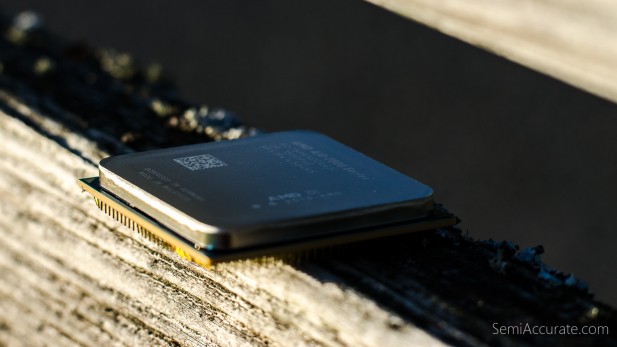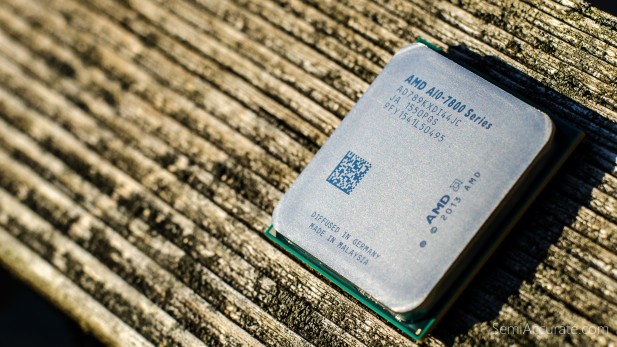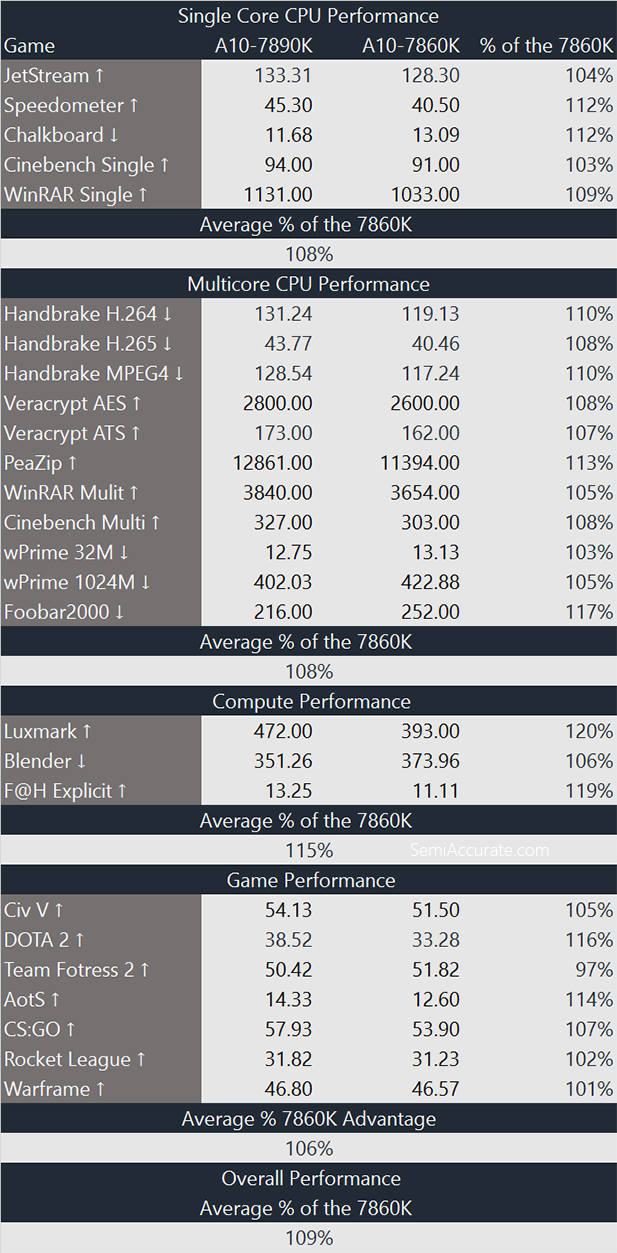In this review SemiAccurate will be comparing AMD’s new 95W APU flagship the A10-7890K to the first socket FM2+ flagship the A10-7850K and its replacement the 65W A10-7860K. At a silicon level these chips are all almost exactly the same. The A10-7890K and the A10-7860K are based on a mild revision of AMD’s Kaveri chip dubbed Godavari. The A10-7850K is one of the original SKUs based on AMD’s Kaveri and launched just over two years ago. All three have 4 Steamroller cores, 8 GCN computer units, and support for DDR3-2133 memory.

Given all the coverage of the now quickening death of the consumer PC market it should be no surprise to SemiAccurate readers that AMD hasn’t invested much its resources into the desktop APU market since the A10-7850K launched two years ago. AMD’s main focus has been on building chips for the 15 to 35 Watt range aimed at laptops. This change in focus has resulted in a desktop line-up that has largely stagnated while AMD’s continued to iterate with genuinely new products in the mobile market. Products like the Carrizo APU that never made it to the desktop in any meaningful way.
What’s strange about the lanuch of the A10-7890K is that this might have been an interesting product about a year ago. But with Socket AM4, new Bristol Ridge APUs, and Raven Ridge on the horizon it’s hard to get excited about a new flagship for a dead socket. All of the issues that limited Kaveri’s viability in the desktop market are still present; little has changed strategically. On the other hand AMD’s finally broken the Teraflop barrier with this APU. Congrats to them for finally living up to the pre-lanuch internal projections for Kaveri.
Historical critiques aside, the A10-7890K is the fastest APU AMD’s ever released for the desktop market.
Power Consumption
To verify AMD’s power consumption claims we broke out our trusty Kill-Watt-EZ and then measured complete system power consumption from the wall.
The 7890K does well in our power consumption testing. Drawing just a few more Watts under load and about ten less at idle the the 7850K. Compared to the 7860K the difference is rated TDPs is clear. Oddly the 7890K even drew a few less Watts at idle which we’re going to chalk up to the motherboard being weird with the 7860K in it.
Too Long; Didn’t Read
If you’re a subscriber you can now find our testing methodology, exact hardware configurations, a detailed justification of these benchmarks, and our raw testing data at the very end of the article. We’ve opted to place that information behind our paywall with the acknowledgement that few people actually read those parts of our reviews and with the goal of making these articles easier to read for people who aren’t interested in those aspects of our content.
I’ve got a couple of these FM2+ chips that I don’t have motherboards for right now. Send a vague yet pithy justification for why you read S|A by this Monday and I (thomas at semiaccurate dot com) will send out either a 7860K or 880K to the winners next week. This announcement is purposely hidden as an experiment to see who’s paying attention. Congrats for finding it! (P.S. ships to Continental US only via USPS.)
Transparency Statement
For the sake of transparency, we want you to know that AMD provided all of the APUs and the DDR3 memory we’ll be testing in this review. All the other components were purchased at retail and without the knowledge or consent of those companies. We took no outside input for this article.
Test Results
For a 30 Watt bump in TDP the A10-7890K offers you about a ~10% increase in performance over the A10-7860K. Notably compute performance see a disproportionate gain compared to our other categories of performance. Is this the fastest APU AMD has ever produced? Yes. Is it _THAT_ much faster than any other APU, not really. But it’s still a decent bump for an end of life update.
Pricing
With performance and power consumption pinned down the only issue left to consider is pricing. Right now you can find the retail boxed version of the A10-7890K on Amazon for about $150 complete with AMD’s Cooler Master-branded 125 Watt near-silent cooling solution. This price point puts it right up against Intel’s Core i3-6300 which offers a pair of 3.8Ghz cores with Hyperthreading in a 51 Watt TDP.
Conclusions
AMD’s A10-7890K is clearly the fastest desktop APU the company has ever released. It sails past its Godavari brethren like the A10-7860K and the original Kaveri flagship APU the A10-7850K. But while it’s a good bump compared to the other SKUs in its lineup I’m afraid the competitive landscape hasn’t changed much even with the addition of this APU.
Here’s our simple comparison matrix to make this match up more clear:
A 3.8 Ghz Skylake chip is clearly going to offer better single threaded performance than anything AMD can muster at the moment. We’re calling multi threading a draw given how much faster Intel’s cores are on an individual basis and because of the presence of Hyperthreading on this chip. Compute and Gaming will clear victories for AMD unless you bring a discrete GPU into the mix at which point they’d become a draw. The 6300’s TDP is about half of the A10-7890K’s so the outcome of a power consumption match up appears clear.
There you have it: the A10-7890K is a competent offering from AMD, but it fails to disrupt the desktop processor marketplace in any significant way. Socket AM4 and all the goodness that it brings can’t come soon enough.
Note: The following is for professional and student level subscribers.
Disclosures: Charlie Demerjian, Thomas Ryan and Stone Arch Networking Services, Inc. have no consulting relationships, investment relationships, or hold any investment positions with any of the companies mentioned in this report.
Thomas Ryan
Latest posts by Thomas Ryan (see all)
- Intel’s Core i7-8700K: A Review - Oct 5, 2017
- Raijintek’s Thetis Window: A Case Review - Sep 28, 2017
- Intel’s Core i9-7980XE: A Review - Sep 25, 2017
- AMD’s Ryzen Pro and Ryzen Threadripper 1900X Come to Market - Aug 31, 2017
- Intel’s Core i9-7900X: A Review - Aug 24, 2017



